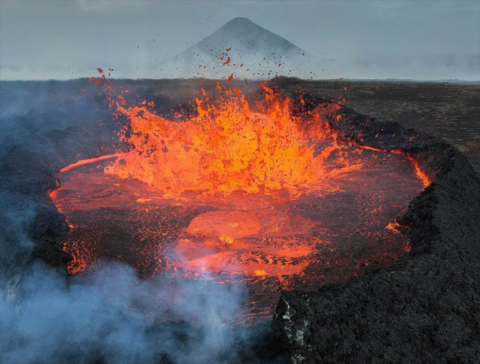What is a magma in geology ?
Magma : definition
This liquid state is an exception in the Earth whose interior is essentially solid, except for the outer core of the planet. For liquids to form, therefore, special geological conditions are required. Most of the time, the fusion is generated by the hydration of mantle peridotites or by their decompression (either via their rise to the surface, or by the thinning of the overlying lithosphere). These conditions are met in particular geological sites : rifts (ridges, Iceland, East African rift), subduction zones (Andes, Indonesia, Japan, etc...), sometimes in the heart of the plates under the effect of "hot spots" (Hawaii, Reunion, Yellowstone, etc...) and more rarely in collision zones (Mont Ararat).

